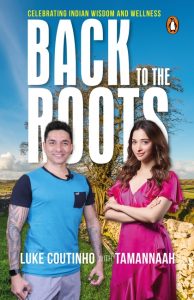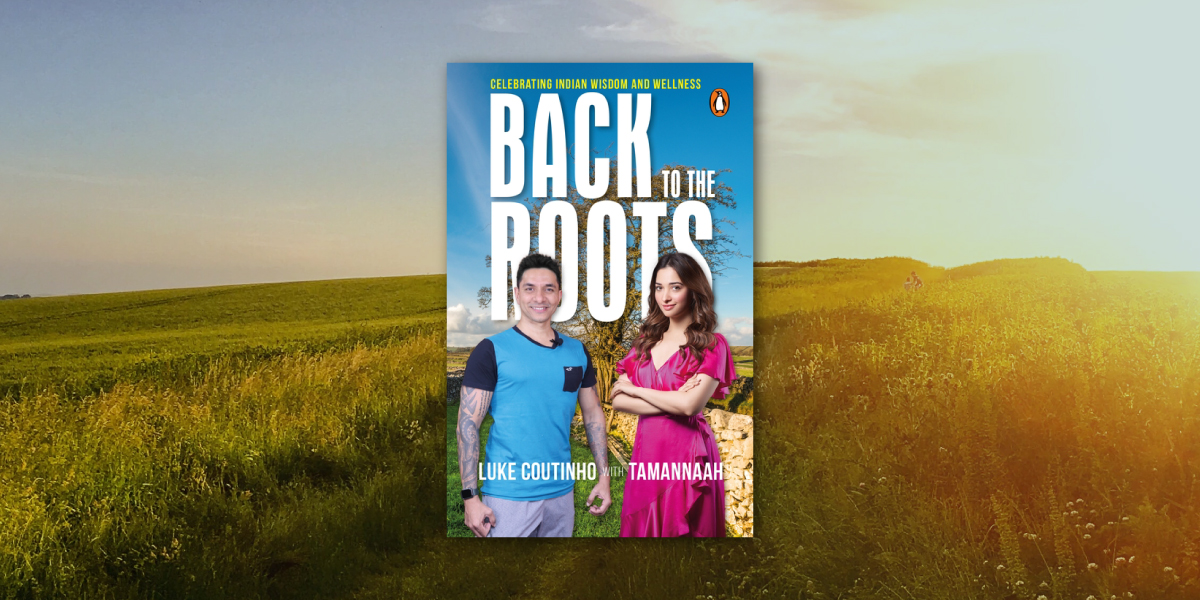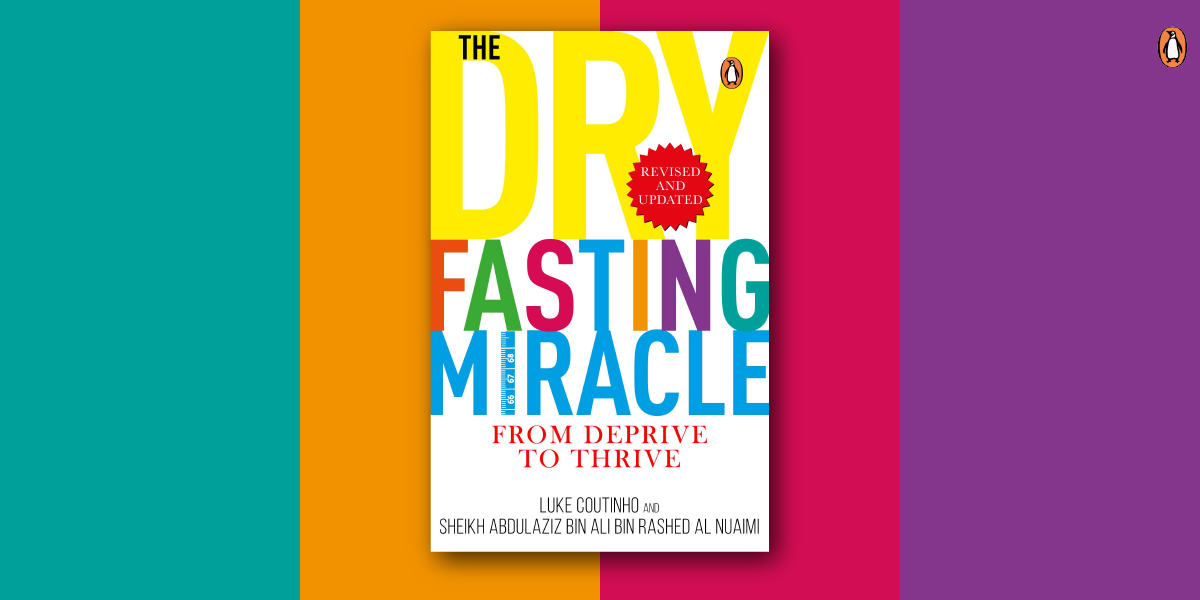Globally renowned holistic lifestyle coach, Luke Coutinho, and a popular actor and model, Tamannaah, take us back to our roots reminding us of the traditional knowledge and wisdom handed down to us over generations. They show us how inexpensive it is to invest in our lifestyles and take our health to the next level.
Here’s an excerpt from Back to the Roots, in which the authors suggest simple lifestyle changes with a list of traditional and healthy foods that we must include our daily lives.
*
Making yourself healthy is not a ‘one-day’ thing and if you are not including the practice in your daily routine, it will be hard to be consistent. Indians knew this very well and hence they included some healthy mixes in their daily life. These were not labelled as superfoods back then, but now they certainly are!

Turmeric Powder with Milk at Night
- Turmeric, or yellow gold, is a medicinal and culinary herb. Warm milk with a hint of turmeric was a common beverage in Indian households.
- Anti-inflammatory properties present in turmeric milk helps promote digestion, preventing stomach ulcers and diarrhoea.
- It’s a potent anti-inflammatory, antioxidant, immunity boosting, liver detoxifying, brain and neurological health-boosting spice. Curcumin, an active ingredient present in turmeric, is responsible for each of these benefits.
Note: Milk may not suit everyone, especially those with lactose intolerance. If you are fine having milk, it is advised to consume milk from Indian cow breeds (A2) that is free of hormones and antibiotics. If you are prone to excess mucus, then consume milk with caution.
Jaggery after Meals
Recent scientific studies have revealed the immense health benefits of jaggery (gur). Initially, it was referred to as ‘the poor man’s chocolate’. Jaggery is now considered an alternative to refined white sugar.
- Jaggery is a superfood during the winter season because it keeps the body warm.
- Jaggery is loaded with antioxidants and minerals such as zinc and selenium and helps boost low haemoglobin levels. Anaemia, or low haemoglobin levels, is a major concern among young women, teens and pregnant mothers in most parts of our country. A beverage of lemon water and jaggery is a great remedy to boost iron levels.
Having Some Form of Amla in Your Daily Diet
Indian gooseberry or amla is an inexpensive and easily available addition to your meals if you are looking to boost your immunity. Amla contains essential minerals and vitamins that are not only integral to our body’s well-being, but also indispensable to preventing and managing some of the most common and widespread diseases. Amla combats common cold and cough due to its high vitamin C content.
- Vitamin C in amla aids synthesis of collagen that helps maintain the integrity and firmness of skin.
- Amla strengthens the inner walls of arteries often damaged due to exposure to pollution and faulty lifestyle habits like smoking.
- Indian gooseberry manages high levels of bad cholesterol and diabetes and reduces inflammation thanks to the presence of chromium, a trace mineral responsible for increasing insulin sensitivity of cells.
Chewing Tulsi Leaves
Tulsi (holy basil) is a sacred plant in Hindu belief. A tulsi plant is present in most Indian households as we worship the plant and use it for medicinal purposes.
- Holy basil is a known adaptogenic herb that helps address hormonal imbalances in the body.
- Tulsi works as a natural decongestant and immunity booster.
- It’s a great stress relieving herb, and can be used as an alternative to tea and coffee.
- Slowly chewing a few leaves of tulsi will keep the stomach happy.
Fenugreek
- The green leafy vegetable is extremely rich in iron, folate, magnesium and chlorophyll.
- It can keep your cholesterol levels in check by reducing bad cholesterol (LDL and triglycerides), and maintaining heart health.
- It can also be used as a potent galactagogue for lactating mothers.
- It aids management of blood sugar levels in case of diabetes.
- Fenugreek (kasuri methi) is super-rich in fibre and promotes healthy bowel movement in case of constipation.
Chyawanprash
Chyawanprash is an Ayurvedic superfood made up of nutrient-rich herbs and minerals. It is a rasayana formulation meant to restore the drained reserves of life force (ojas) and to preserve strength, stamina and vitality while stalling the course of ageing. The word ‘chyawan’ translates to degenerative change, and ‘prasha’ means an edible substance.
**
To know about all other healthy foods for your everyday diet, read Back to the Roots and adopt easy lifestyle changes for a healthier and happier life.









